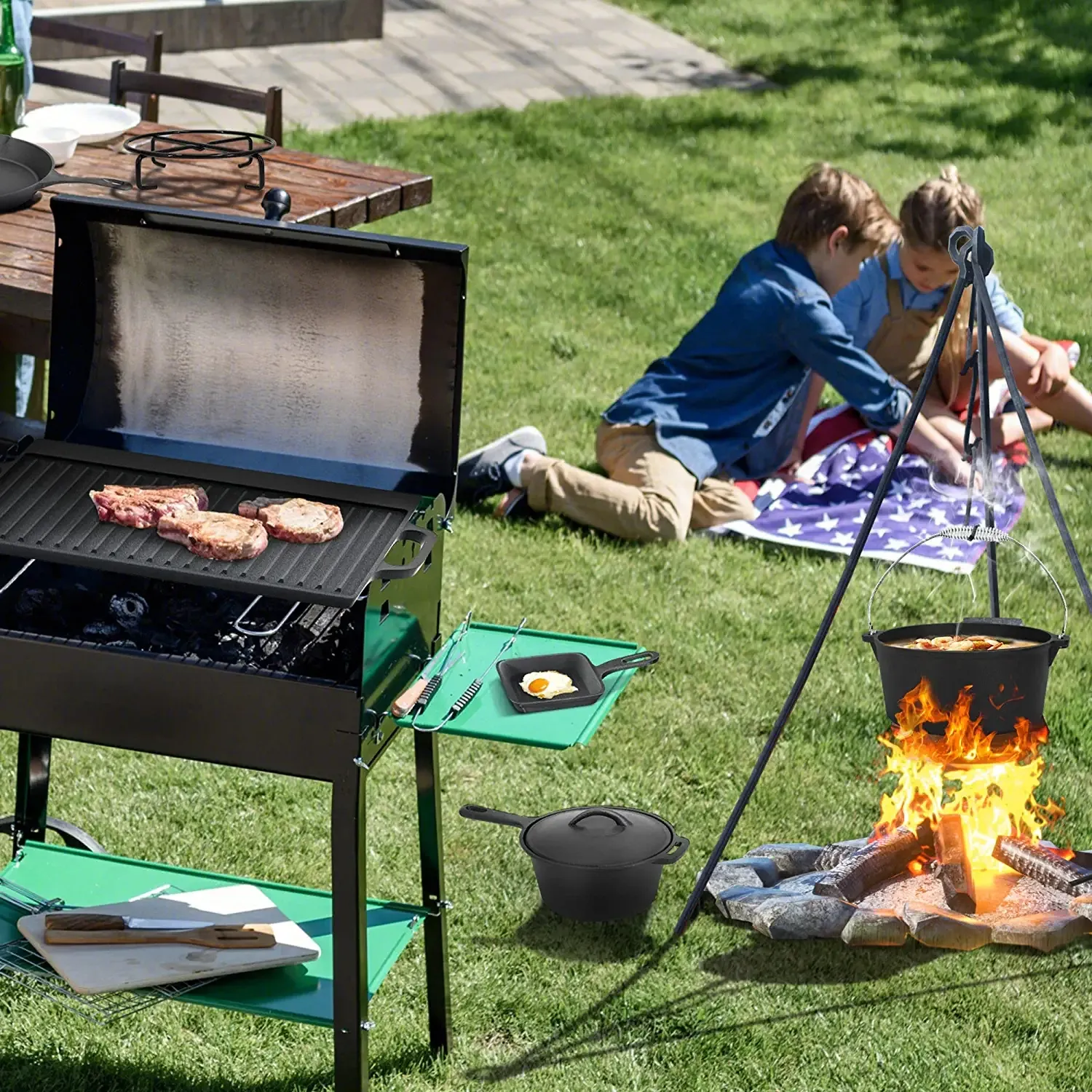
Feb . 11, 2025 12:17
Back to list
how to choose dutch oven
Choosing the perfect Dutch oven can significantly enhance your cooking experience, whether you're a home chef or an outdoor enthusiast. With so many options available on the market, the task of finding the one that fits your needs can seem daunting. Here's an authoritative guide to help you make an informed decision rooted in expertise, real-world experience, and trustworthiness.
Material and Construction Make a Difference The material and construction of a Dutch oven are critical indicators of its quality and longevity. Traditional cast iron options excel in retaining and evenly distributing heat, making them suitable for slow-cooked dishes and frying. Enameled versions offer the same benefits plus a non-reactive surface that's ideal for acidic foods. Always opt for well-constructed ovens with thick bases and walls to ensure they can handle high temperatures and resist warping over time. Brand Reputation and Price Considerations Invest in a Dutch oven from a reputable brand recognized for quality and reliability. Brands like Le Creuset, Staub, and Lodge have established trust through decades of expertise in crafting durable cookware. While these brands might demand a higher price, the cost reflects the long-term investment in a piece that often lasts for generations. However, there are budget-friendly options available that don't compromise much on performance. Analyze consumer reviews and professional recommendations to gauge the credibility of different makers. Maintenance and Care for Longevity Proper care is crucial for extending the life of your Dutch oven. Enameled versions require gentle cleaning and are usually dishwasher safe, though hand washing is always preferred. For traditional cast iron, maintaining the seasoning is essential—avoid harsh soaps, and dry promptly to prevent rust. Periodically apply a thin layer of oil after cleaning to preserve the non-stick patina and protect the surface. The Dutch oven's resilience and functionality make it indispensable for anyone passionate about cooking. By understanding which features align with your cooking style and needs, you can choose a Dutch oven that offers many years of culinary pleasure. Investing in quality cookware is more than just a purchase—it's embracing a tradition of excellent cooking experience. Trust your instincts, rely on expert advice, and remember that a well-chosen Dutch oven is an asset in any kitchen.


Material and Construction Make a Difference The material and construction of a Dutch oven are critical indicators of its quality and longevity. Traditional cast iron options excel in retaining and evenly distributing heat, making them suitable for slow-cooked dishes and frying. Enameled versions offer the same benefits plus a non-reactive surface that's ideal for acidic foods. Always opt for well-constructed ovens with thick bases and walls to ensure they can handle high temperatures and resist warping over time. Brand Reputation and Price Considerations Invest in a Dutch oven from a reputable brand recognized for quality and reliability. Brands like Le Creuset, Staub, and Lodge have established trust through decades of expertise in crafting durable cookware. While these brands might demand a higher price, the cost reflects the long-term investment in a piece that often lasts for generations. However, there are budget-friendly options available that don't compromise much on performance. Analyze consumer reviews and professional recommendations to gauge the credibility of different makers. Maintenance and Care for Longevity Proper care is crucial for extending the life of your Dutch oven. Enameled versions require gentle cleaning and are usually dishwasher safe, though hand washing is always preferred. For traditional cast iron, maintaining the seasoning is essential—avoid harsh soaps, and dry promptly to prevent rust. Periodically apply a thin layer of oil after cleaning to preserve the non-stick patina and protect the surface. The Dutch oven's resilience and functionality make it indispensable for anyone passionate about cooking. By understanding which features align with your cooking style and needs, you can choose a Dutch oven that offers many years of culinary pleasure. Investing in quality cookware is more than just a purchase—it's embracing a tradition of excellent cooking experience. Trust your instincts, rely on expert advice, and remember that a well-chosen Dutch oven is an asset in any kitchen.
Previous:
Latest news
-
Season Cast Iron Perfectly with GPT-4 Turbo TipsNewsAug.01,2025
-
High Quality Cast Iron Cookware - Baixiang County Zhongda MachineryNewsAug.01,2025
-
Premium Cast Iron Pan: Durable & Perfect HeatNewsAug.01,2025
-
High Quality Kitchen Durable Black Round Cast Iron Cookware Pancake Crepe Pan-Baixiang County Zhongda Machinery Manufacturing Co., Ltd.NewsAug.01,2025
-
Cast Iron Cookware - Baixiang County Zhongda Machinery | Nonstick, Heat ResistanceNewsAug.01,2025
-
High Quality Kitchen Durable Black Round Cast Iron Cookware - Baixiang County Zhongda Machinery | Non-Stick, Heat Retention, DurableNewsJul.31,2025


